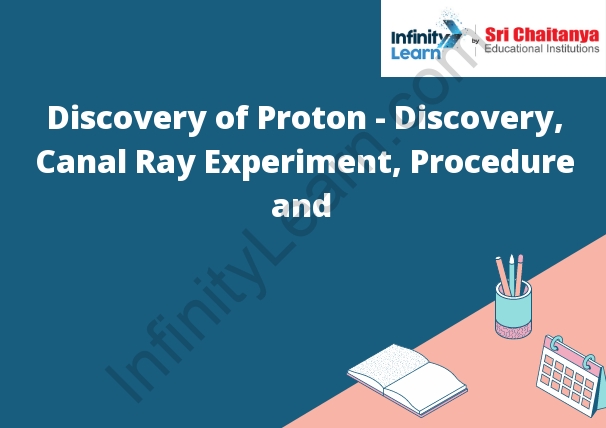Table of Contents
Discovery of Proton
In 1897, J.J. Thomson discovered the proton. Thomson was studying the properties of cathode rays, which are beams of electrons that are emitted from heated metals. He found that cathode rays were deflected by a magnetic field in a direction that was perpendicular to the direction of the electron beam. Thomson hypothesized that the cathode rays were made up of small particles that were deflecting the magnetic field. He called these particles “corpuscles” and later changed the name to “protons.”

What are Protons?
A proton is a positively charged subatomic particle that is found in the nucleus of an atom. Protons are made up of three quarks, and they have a mass of 1.67×10-27 kg.
What is The Mass of Proton?
The mass of a proton is 1.67262 × 10-27 kg. A proton is a subatomic particle that is the nucleus of a hydrogen atom. It has a positive charge and a mass that is about 1,836 times the mass of an electron.
Discovery of a Proton
The discovery of a proton was one of the most important scientific discoveries of all time. It was made by Ernest Rutherford, who was working in Manchester, England, in 1919. Rutherford and his team were studying the nature of the atom by firing alpha particles (helium nuclei) at a thin sheet of gold. They were expecting to see the alpha particles scattered in all directions. However, most of the particles passed straight through the gold sheet. A few were scattered in all directions, but a few were scattered backwards. This showed that the atom must have a small, dense center, which Rutherford called the nucleus. He also realized that the nucleus must be made up of something smaller than an alpha particle. He called this smaller particle a proton.
Canal Ray Experiment: Discovery of Protons
In 1896, J.J. Thomson, a British physicist, conducted a series of experiments that led to the discovery of the proton. Thomson used a device known as a cathode ray tube to study the nature of electric currents. He observed that the cathode ray tube emitted a beam of particles that could be deflected by electric and magnetic fields. Thomson concluded that the particles were composed of smaller particles, which he called electrons.
Thomson then set out to determine the mass of the electrons. To do this, he used a device known as a mass spectrometer. A mass spectrometer separates particles according to their mass. Thomson found that the electrons had a mass that was 1,836 times smaller than the mass of a proton. Thomson concluded that the proton was the smallest particle in the cathode ray beam.
Properties of Protons
A proton has a mass of 1.673 × 10−27 kg, a diameter of about 1.1 × 10−15 m, and a charge of +1.602 × 10−19 coulombs.
How to Determine the Number of Protons in any Element?
The number of protons in an element can be found on the periodic table. The number of protons is listed in the element’s atomic number.
Questions that can be asked in the Exam
1. What is the difference between an atom and a molecule?
2. How do you calculate the molar mass of a molecule?
3. What is the difference between an element and a compound?
4. What is the difference between a cation and an anion?
5. What is the difference between a physical change and a chemical change?
6. What is the difference between a pure substance and a mixture?
7. What is the difference between a solid, a liquid, and a gas?
8. What is the difference between a molecule and a formula unit?
Infinity Learn App
Now you can find answer to all your subject queries & prepare for your Exams on our test preparation app – Infinity Learn.





